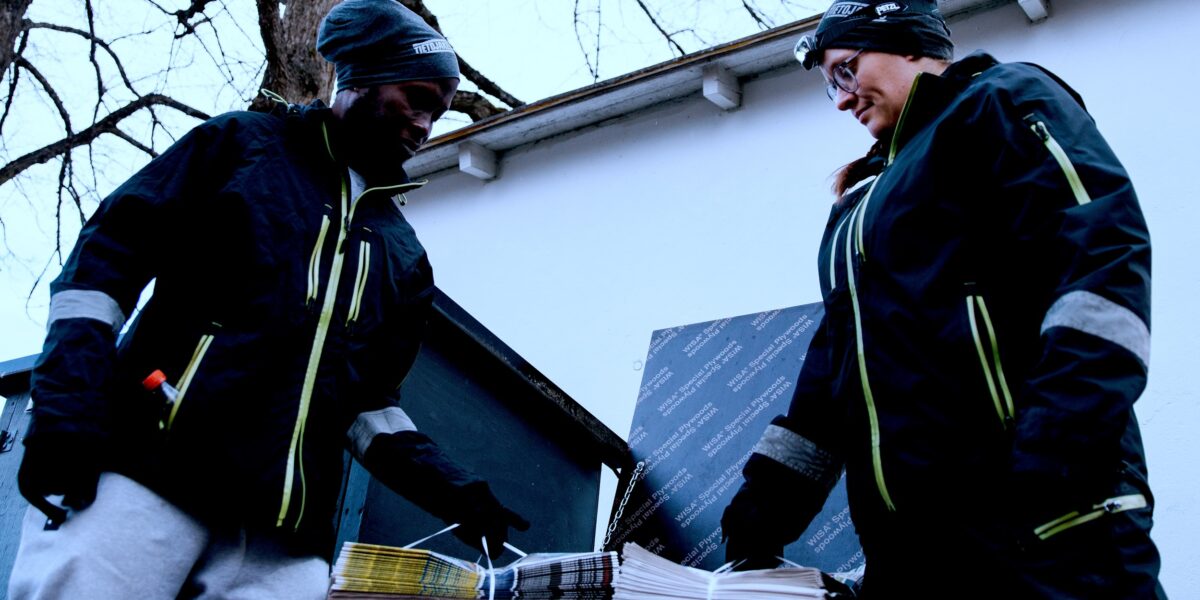Who is suitable for the job?
The role of a deliverer suits people in many different life situations. Our team includes students, entrepreneurs, stay-at-home parents, and individuals with other jobs. What they all share is the desire for additional income and flexible part-time work. Since the work is done at night, your days remain free for studying, hobbies, or other commitments.
To succeed, you should be in reasonably good physical condition, work independently, and be able to adapt to night shifts. Some routes can be physically demanding, and adjusting to night work may take time. We encourage you not to make hasty decisions based on the first few nights — give yourself time to adapt.
What kinds of products are delivered at night?
The main product is Turun Sanomat, but you may also deliver up to 21 other newspapers, such as Helsingin Sanomat and Kaarina-lehti.
In addition to newspapers, deliveries include magazines, letters, small packages, and advertisements. Addressed mail is mainly delivered on weekdays (Monday to Friday). For advertisements, you will receive a separate per-copy compensation.
Where does the deliverer pick up the papers to be delivered? How to get there?
Newspapers are found at the drop-off point for each route. In addition to newspapers, other products to be distributed such as letters and magazines are also found at the drop-off point. The delivery person comes to the drop-off location using the same means of transport he uses to do his work, i.e. a bicycle provied by the employer or his own car.
How long are working hours at night?
The number of hours in one night varies between three and five hours, depending on the region and the amount of delivery material. On average, the length of a working night is about four hours. The number of hours becomes more precise when it is known which routes the deliverer takes care of. The work is done on average between 01:30 and 06:00.
Is night work dangerous?
The main challenges of night work are related to weather conditions, such as heavy snow, slippery surfaces, and darkness. To ensure safety, we provide anti-skid shoe covers, studded bicycle tires, and headlamps to help you manage these conditions effectively.
How do I get support during my shifts?
During your shift, you can always contact early delivery support, which is on duty every night when newspapers are delivered. They are available to assist you with any questions or issues that may arise.
Do the deliverers need their own bike or car?
Most routes in Turku are delivered by bicycle, and you do not need to provide your own — we supply company bicycles for your work. In other locations outside Turku, deliveries are made either with your own car or a company car. If you use your own car for a route designated for personal vehicle use, you will receive a tax-free kilometer compenstaion in accordance with the Tax Administration’s guidelines.
Do the deliverers get work clothes or shoes?
Employees in permanent positions will receive protective clothing after the trial period. Work shoes, however, must be purchased by each deliverer individually. The cost of these shoes can be deducted in your taxes.
What tools do the deliverers use in their work? How do the deliverers know where the newspapers are delivered to?
Deliverers use a delivery book application on their work phone. The app provides the delivery route and detailed instructions for locating the correct mailboxes and mailslots, including both addressed and unaddressed items.
The deliverers receive a carrier bag, gloves, headlamp, rain coat, bicycle helmet and a hood, a protective bag for the phone and for their own car, e.g. a phone holder and a service driving sign from the employer.
Is knowledge of the Finnish language mandatory?
The delivery instructions are also available in English, so good Finnish or English language skills are required.
How much does the work pay?
The hourly wage is in accordance with the collective agreement on delivery between unions (Medialiitto & Teollisuusliitto). For new employees, the average hourly wage including extras is €12–13. The hourly wage increases as the years of employment increase.
How is my work schedule?
The most common rotation is six consecutive nights of work followed by two nights off. Since our main product, Turun Sanomat, is published 355 times a year, deliveries take place on weekdays, weekends, and some holidays.
What kind of holidays do the deliverers have?
Deliverers have a normal statutory five-week annual leave.
What kind of staff benefits are offered to the deliverers?
As an employee, you’ll enjoy benefits such as a newspaper subscription, exercise benefits, and advertising discounts.

